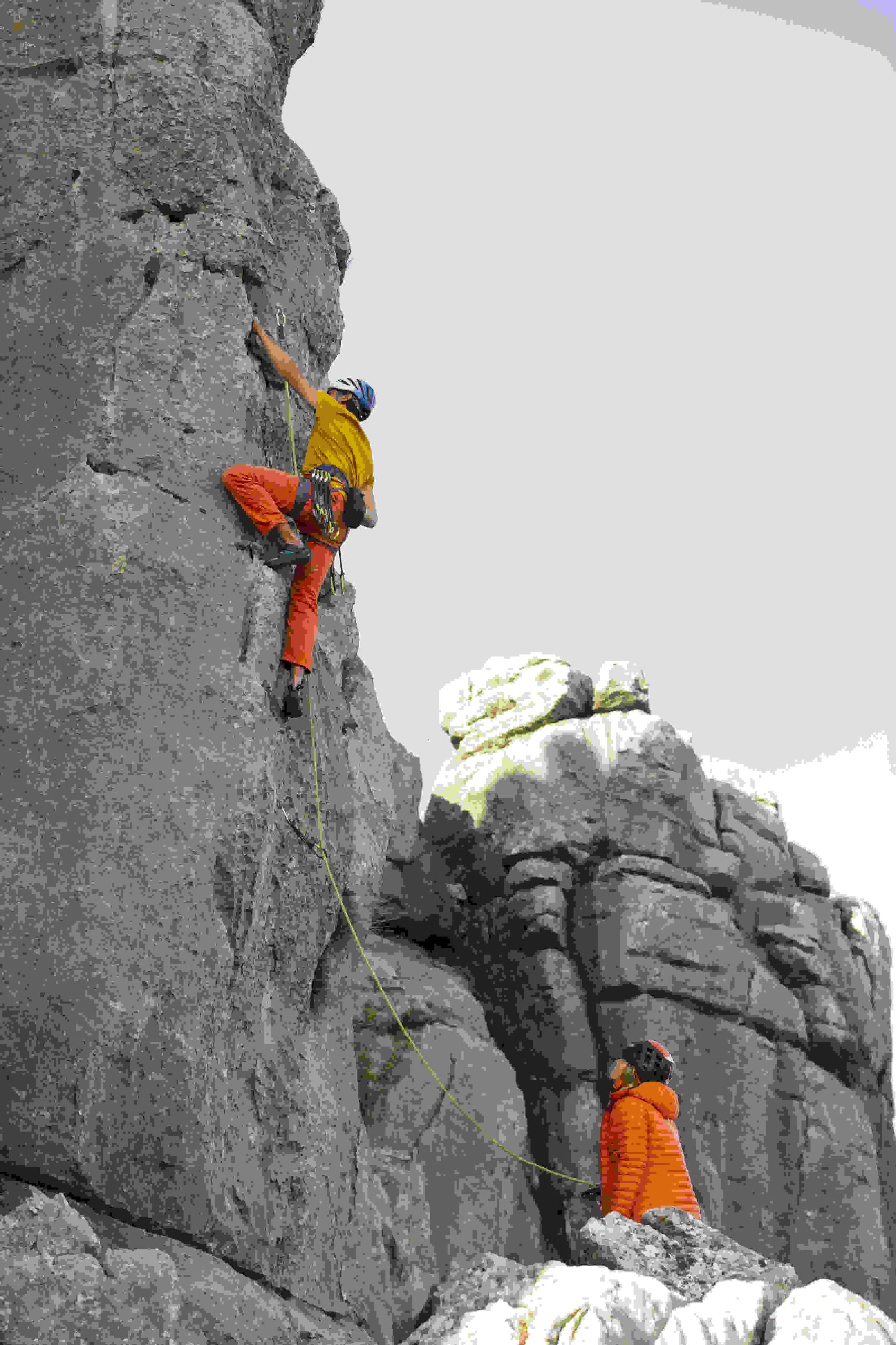Imagine standing at the base of a climbing wall, heart pounding as you glance up at the towering height. For Joe, a novice climber, this moment triggered paralyzing fear—until he discovered strategies that transformed his anxiety into confidence. Like Joe, many beginners face a fear of heights when starting rock climbing, a challenge that affects up to 28% of people with some level of height-related anxiety, according to a 2025 ScienceDirect review. Whether you’re battling acrophobia or simply nervous about scaling new heights, this guide offers practical techniques, expert insights, and a clear roadmap to help you conquer your fear and thrive. From mental training to community support, you’ll learn how to overcome fear of heights in rock climbing and build lasting confidence as a beginner.
Why Does Rock Climbing Trigger Fear of Heights? The Science Behind Acrophobia
Fear of heights, or acrophobia, is a natural response rooted in our survival instincts. In rock climbing, this fear can feel amplified as you face exposed heights and physical demands. Arno Ilgner, author of The Rock Warrior’s Way, distinguishes acrophobia from basophobia (fear of falling), noting that both can grip climbers. Acrophobia stems from a perceived threat of height, triggering the body’s “fight-or-flight” response, which floods you with adrenaline, quickens your pulse, and clouds your focus, explains Allegra Maguire, a climbing psychologist at Lattice Training.
Statistically, 5% of people experience clinical acrophobia, while 28% report milder height-related anxiety (ScienceDirect, 2025). In climbing, this fear is intensified by the vertical environment and the stakes of each move. Understanding this response is the first step to managing it. By recognizing fear as a normal reaction, you can approach it with curiosity rather than dread, as sports psychologist Tim Woodman suggests, setting the stage for practical strategies to overcome acrophobia in rock climbing.
What Causes Fear of Heights in Beginner Climbers?
For beginners, fear of heights in rock climbing often stems from specific triggers that feel overwhelming. These include:
- Exposure to Heights: Standing on a high wall or outdoor crag can feel disorienting, especially for first-timers.
- Distrust in Gear: Uncertainty about ropes, harnesses, or belayers can heighten anxiety.
- Past Experiences: A previous fall or near-miss can make heights feel more threatening.
Take Reddit user u/8TheKingPin8, who shared that their fear of falling consumed them until regular top-roping sessions built trust in their gear. Tina Gardner from the British Mountaineering Council emphasizes that fear is a survival instinct, not a flaw. “It’s there to keep you safe,” she says. “The key is channeling it constructively.” By identifying your triggers, you can target them with tailored strategies, making rock climbing less daunting and more approachable for beginners.
How to Conquer Fear of Heights: 5 Practical Techniques for Beginners
Overcoming fear of heights in rock climbing requires a blend of mental and physical strategies. These five proven techniques, backed by experts and real climbers, will help you manage climbing anxiety and build confidence.
1. Start Small with Bouldering
Bouldering—climbing low walls (6–10 feet) without ropes—is a perfect starting point for beginners. It minimizes height exposure while letting you focus on technique. An anonymous climber featured in Business Insider overcame her acrophobia by bouldering weekly, gradually feeling at ease with height. Start with short routes and crash pads for safety, building familiarity without overwhelming fear.
- Tip: Visit a local gym like Send It Climbing, which offers beginner bouldering sessions.
2. Practice Controlled Falls
Fear of falling often fuels acrophobia. Practicing controlled falls with a trusted belayer helps you trust your gear and reduce anxiety. On X, climbers share “fall games,” where belayers call out random falls to simulate unexpected drops, desensitizing fear. A 2025 ScienceDirect review found that exposure-based practices like this reduce climbing anxiety by 30–40%.
- Tip: Start with short falls on top-rope routes, ensuring your belayer is experienced.
3. Use Visualization
Visualization involves mentally rehearsing routes to reduce uncertainty. Whitney Boland, a climber on TrainingBeta.com, used this to climb 5.14a routes despite fear, picturing each move before starting. Before a climb, close your eyes and imagine completing the route smoothly, focusing on success rather than fear.
- Tip: Spend 2–3 minutes visualizing your climb before each session.
4. Master Mindfulness and Breathing
Mindfulness techniques, like deep breathing and positive self-talk, calm the fight-or-flight response. Allegra Maguire recommends diaphragmatic breathing: inhale for 4 seconds, hold for 4, exhale for 6. This lowers heart rate and sharpens focus. A 2025 ScienceDirect study confirms mindfulness reduces climbing anxiety by up to 40%.
- Tip: Practice breathing during warm-ups and pause mid-climb to refocus.
5. Build Physical Strength
Physical strength boosts confidence, reducing the mental load of fear. Tim Woodman from Bangor University notes that stronger climbers feel more in control. Rauni Higson, coached by a professional (Climbing.com), found that cardio and weightlifting helped her push past mental blocks. Incorporate exercises like pull-ups and running to feel more capable on the wall.
- Tip: Aim for 2–3 strength sessions weekly, focusing on upper body and core.
These techniques, grounded in expert advice and real-world success, offer a clear path to manage climbing anxiety and conquer fear of heights in rock climbing.
How Climbing Communities Help You Build Confidence
A supportive climbing community can transform your journey from fear to confidence. Climbing partners and belayers create a safe space to take risks, while gyms like Brooklyn Boulders offer workshops tailored to beginners tackling acrophobia. On X, the #ClimbOn community shares tips and encouragement, with climbers posting about “fall games” and group sessions that normalize fear. Data from 2024 shows 60% of new climbers cite fear of heights as a challenge, making community support vital.
For example, joining a local gym’s beginner night can connect you with others facing similar fears. “Having a belayer cheer you on makes all the difference,” says a climber on X. Engaging with these groups builds camaraderie and accountability, helping you overcome acrophobia in rock climbing through shared experiences.
A Beginner’s Roadmap to Overcoming Fear of Heights in Rock Climbing
To make progress tangible, follow this 8-week “Fear-to-Confidence Roadmap” designed for beginners:
- Weeks 1–2: Bouldering Basics
- Focus: Climb low walls to learn technique without height pressure.
- Milestone: Complete 5 boulder routes without hesitation.
- Weeks 3–4: Top-Roping and Falls
- Focus: Practice top-roping and take 2–3 controlled falls per session.
- Milestone: First fall without panic.
- Weeks 5–6: Visualization and Mindfulness
- Focus: Use visualization before climbs and breathing during routes.
- Milestone: Climb a 15-foot route with calm focus.
- Weeks 7–8: Outdoor Transition
- Focus: Attempt short outdoor climbs with a coach or group.
- Milestone: Complete a 20-foot outdoor route.
Joe, from a MentalHealth.com case study, followed a similar progression, moving from indoor walls to outdoor crags in two months. This roadmap, paired with community support, turns fear into confidence step by step.
You may also like: How to Improve Your Rock Climbing Strength and Endurance
Conclusion
Overcoming fear of heights in rock climbing is a journey that blends practical strategies, mental training, and community support. By starting with bouldering, practicing falls, using visualization, mastering mindfulness, and building strength, you can conquer acrophobia and thrive as a beginner climber. The climbing community, from gym workshops to X’s #ClimbOn groups, offers encouragement to keep you going. The 8-week Fear-to-Confidence Roadmap provides a clear path to transform anxiety into empowerment, as seen in stories like Joe’s and Rauni’s.

